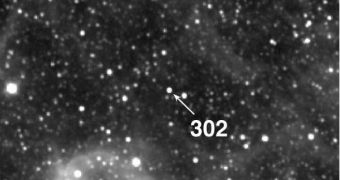A team of experts has recently determined that massive stars, tens to hundred of times the mass of our own Sun, can form nearly everywhere, including in what astronomers would call isolation.
These conclusions belong to a new study carried out by astronomers at the University of Michigan in Ann Harbor, who looked in the Cosmos for tell-tale signs of where these structures prefer to develop.
Until now, it was believed that these stars' formation processes required at least a large stellar cluster nursery to be triggered, but the new investigation would appear to infirm that hypothesis.
In order to conduct this investigation, the team used the NASA Hubble Space Telescope, which they pointed towards one of Milky Way's nearest galactic neighbor, the Small Magellanic Cloud.
The experts found 8 massive stars to include in the survey, that had masses ranging from 20 to 150 times heavier than that of the Sun. All these objects appeared to be on their own in the sky, as viewed from our planet's vantage point.
Of the eight study targets, only three were determined to have companion stars in their surroundings. The other five were on their own, experts say, adding that Hubble could not distinguish any other light signatures in their vicinity.
U-M Department of Astronomy associate professor Sally Oey and PhD student Joel Lamb conducted the new research, which is detailed in the December 20 issue of the Astrophysical Journal.
“My dad used to fish in a tiny pond on his grandma's farm. One day he pulled out a giant largemouth bass. This was the biggest fish he's caught, and he's fished in a lot of big lake,” Lamb explains.
“What we're looking at is analogous to this. We're asking: 'Can a small pond produce a giant fish? Does the size of the lake determine how big the fish is'?” he goes on to say.
“The lake in this case would be the cluster of stars. Our results show that you can, in fact, form big stars in small ponds,” the PhD student adds.
This study goes against established findings, which indicate that massive stars can only develop in very large stellar clusters, where sufficient masses of hydrogen gas and cosmic dust are available to fuel their growth.
But the results of the research appear to favor another theory, which states that clusters are not necessarily needed, and adds that the massive stars can literally develop anywhere in the Universe.
This includes in complete isolation and inside very small stellar clusters, numbering as little as 10 stars, the researches explain. “Our findings don't support the scenario that the maximum mass of a star in a cluster has to correlate with the size of the cluster,” Oey explains.
NASA and the National Science Foundation (NSF) supported this study, which was entitled “The Sparsest Clusters With O Stars.”

 14 DAY TRIAL //
14 DAY TRIAL //